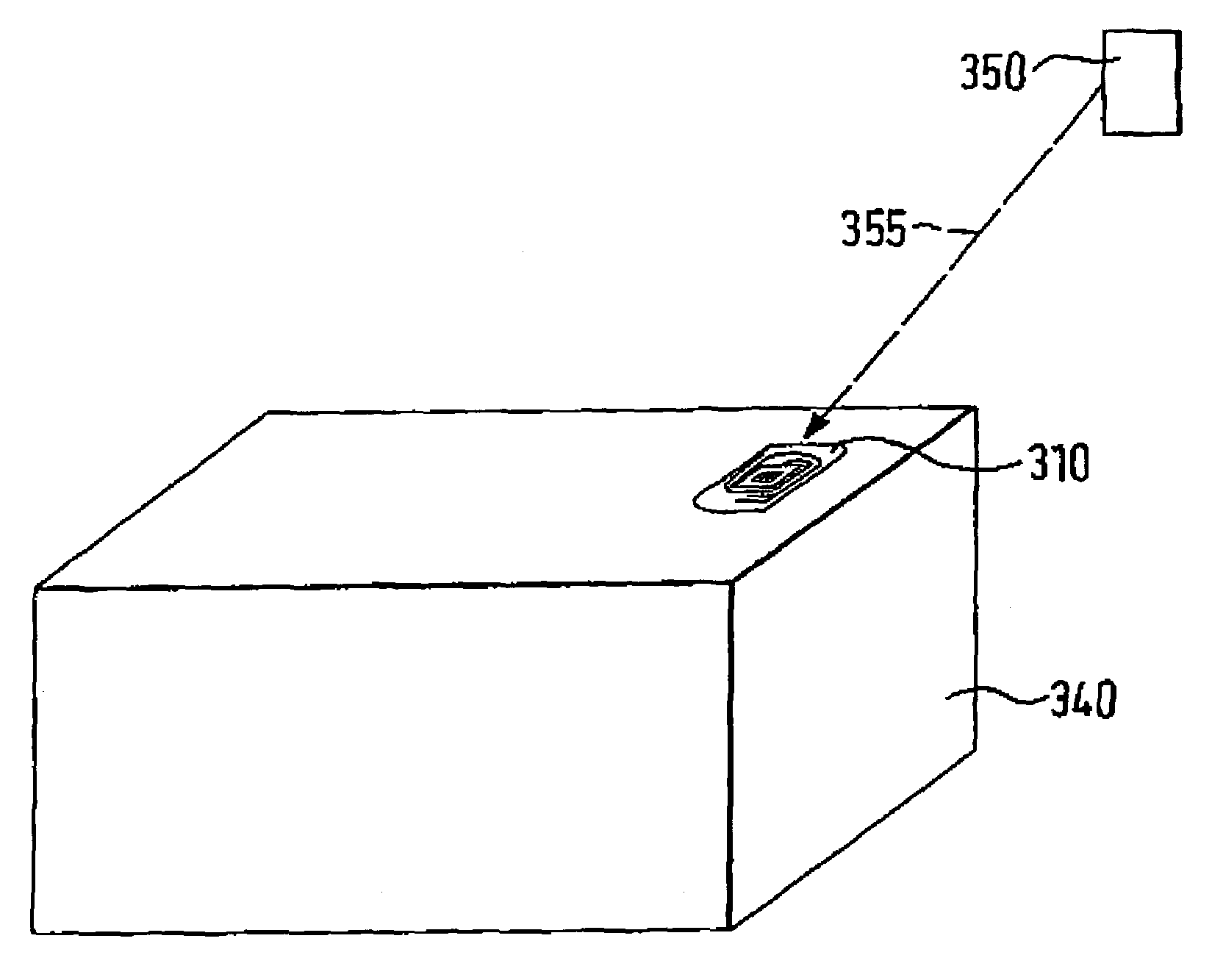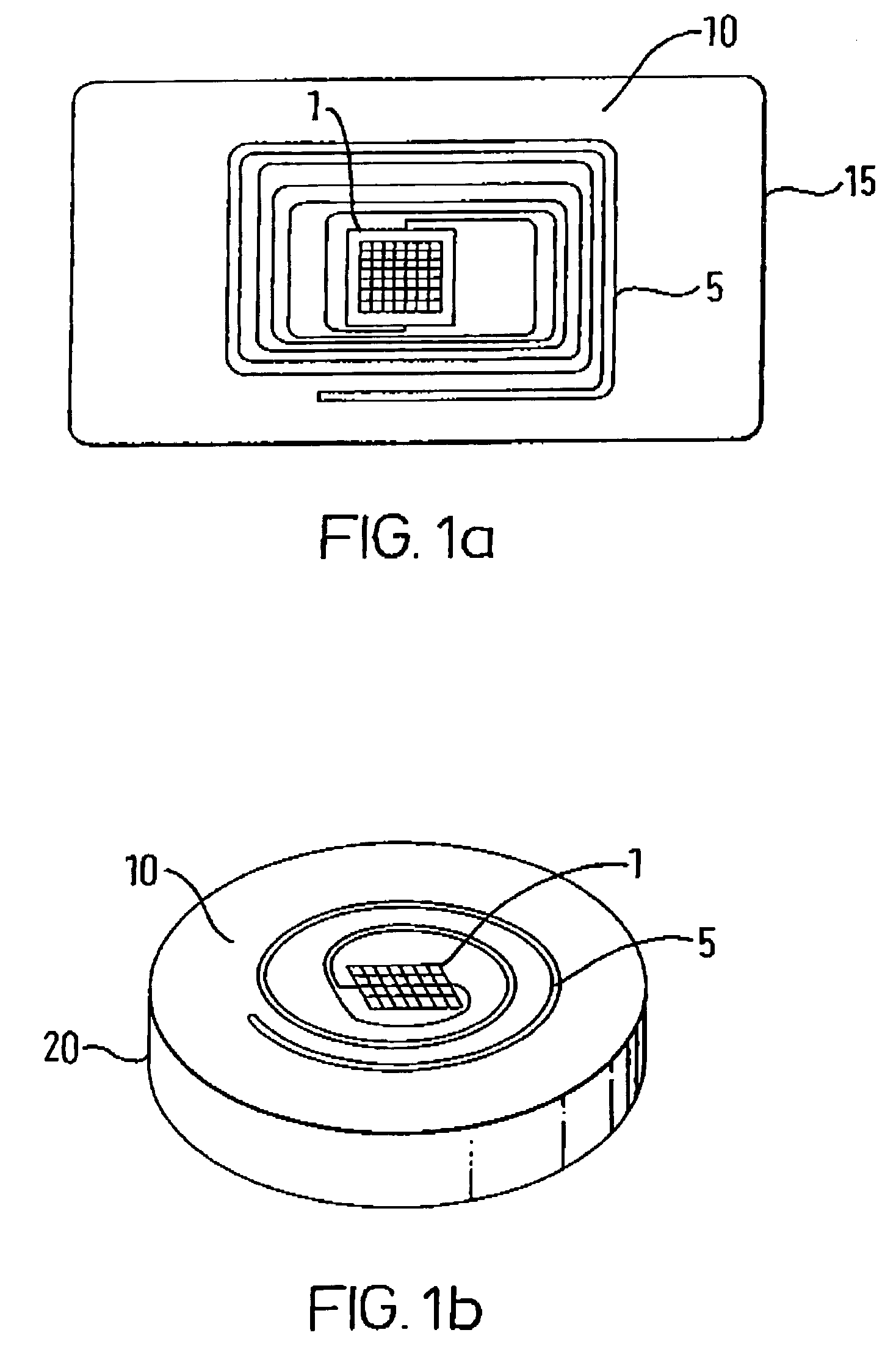Method for monitoring objects with transponders
a technology of transponders and objects, applied in the direction of instruments, resonant antennas, burglar alarm mechanical actuation, etc., can solve problems such as not always being the case, and achieve the effect of reducing interferen
- Summary
- Abstract
- Description
- Claims
- Application Information
AI Technical Summary
Benefits of technology
Problems solved by technology
Method used
Image
Examples
Embodiment Construction
[0083]The basic components of an RFID tag are shown in FIGS. 1a and 1b. The tag comprises a memory chip 1 which is capable of storing, transmitting and receiving information and an antenna 5. Data can be received by, or transmitted from, the chip via antenna 5 which is connected to the chip. The antenna 5, is capable of receiving or transmitting radiofrequency energy over a wide bandwidth, ranging from 50 KHz to 2.5 GHz. The tags 10 are mounted on a rectangular 15 (FIG. 1a) or disc 20 (FIG. 1b) shaped carrier. The carrier, which generally comprises an insulating material such as glass, may take several forms such as a flexible label (FIG. 1a), a rectangular block or a rigid disc (FIG. 1b).
[0084]FIG. 2 is a schematic representation of the memory structure of the RFID chip 101. Such tags are divided into unique blocks, typically numbering sixteen in total, with data being stored in non-volatile memory EEPROM, the EEPROM having a memory capacity of 512 bits with each block consisting o...
PUM
 Login to View More
Login to View More Abstract
Description
Claims
Application Information
 Login to View More
Login to View More - R&D
- Intellectual Property
- Life Sciences
- Materials
- Tech Scout
- Unparalleled Data Quality
- Higher Quality Content
- 60% Fewer Hallucinations
Browse by: Latest US Patents, China's latest patents, Technical Efficacy Thesaurus, Application Domain, Technology Topic, Popular Technical Reports.
© 2025 PatSnap. All rights reserved.Legal|Privacy policy|Modern Slavery Act Transparency Statement|Sitemap|About US| Contact US: help@patsnap.com



